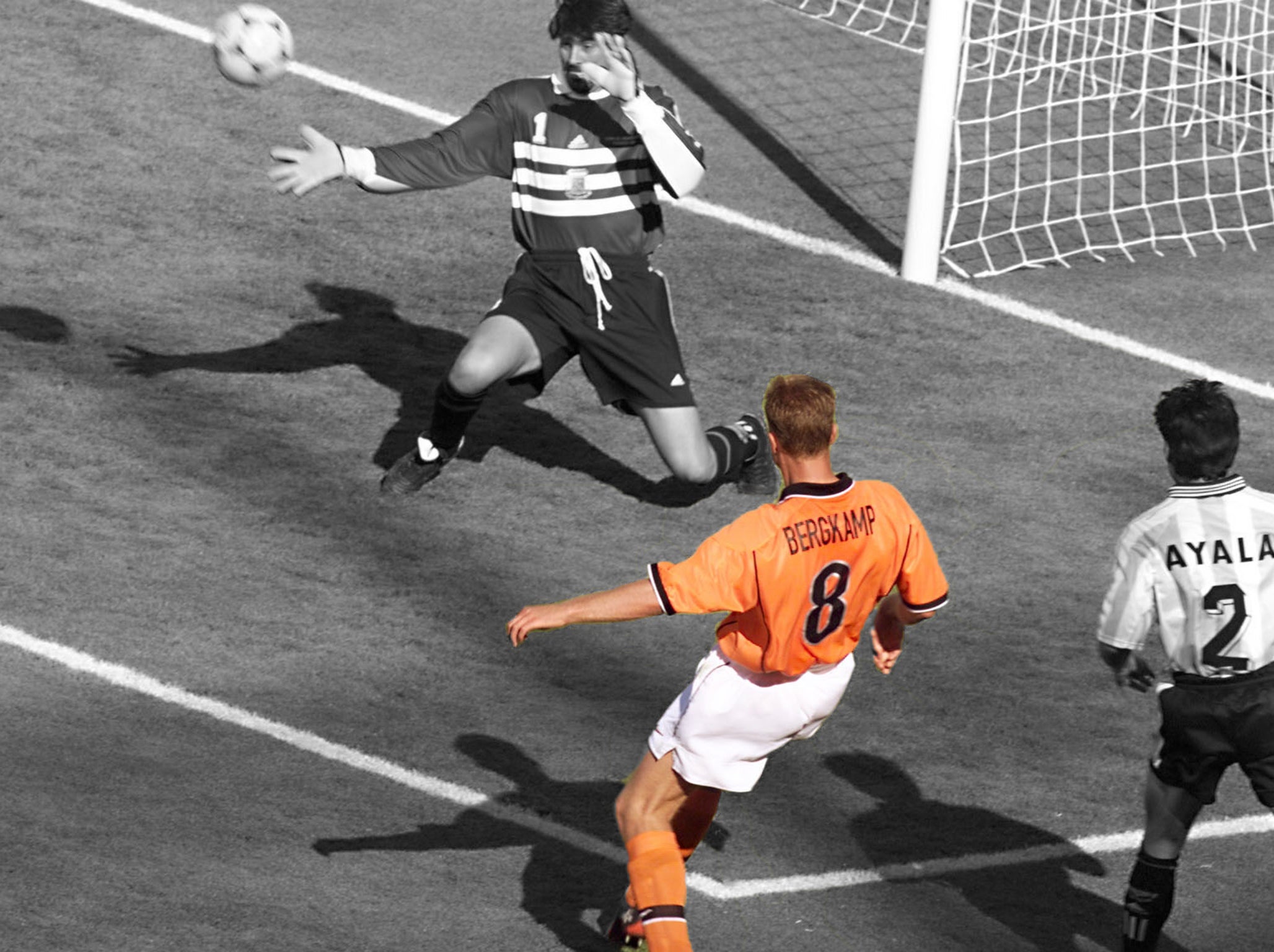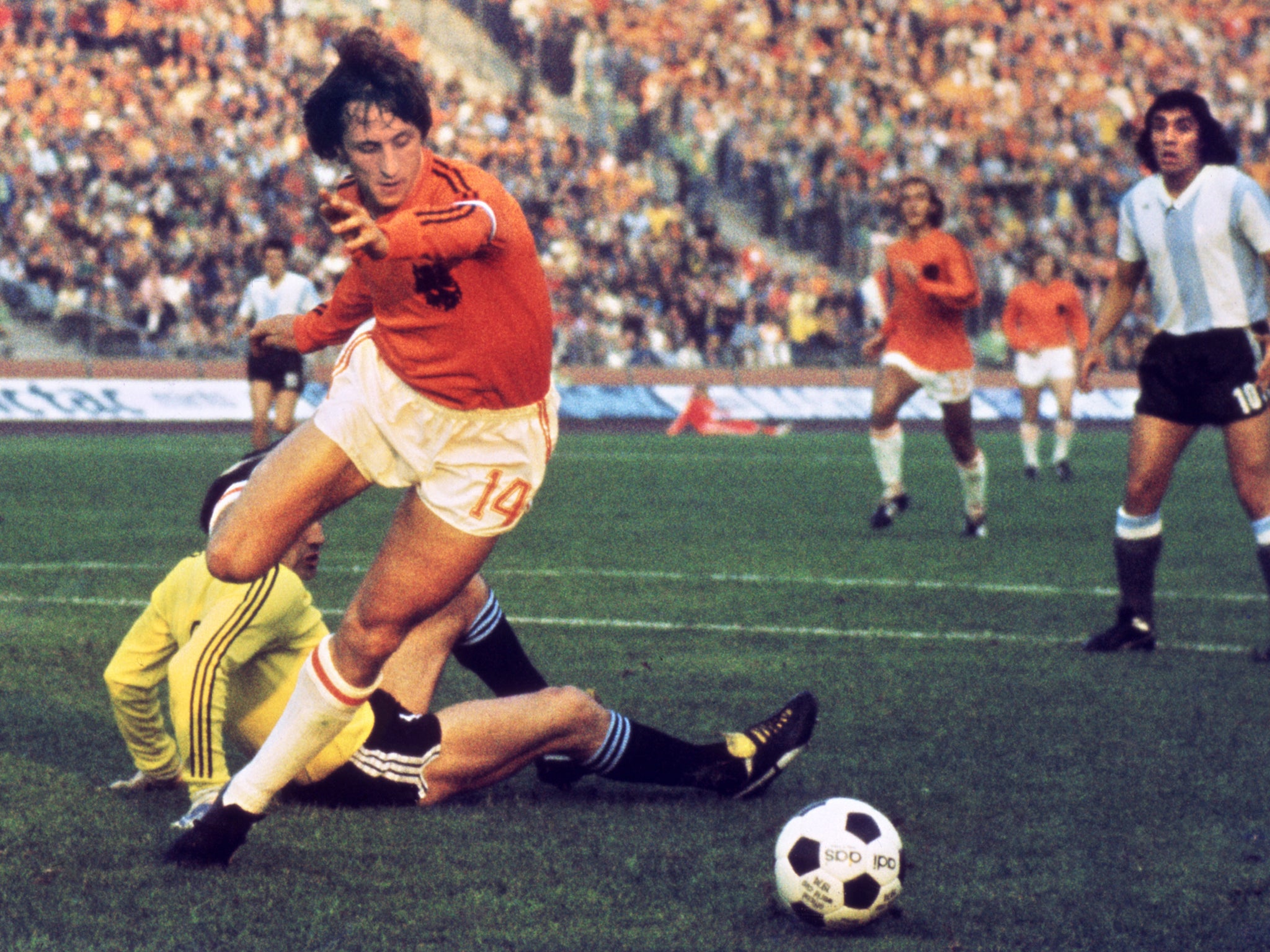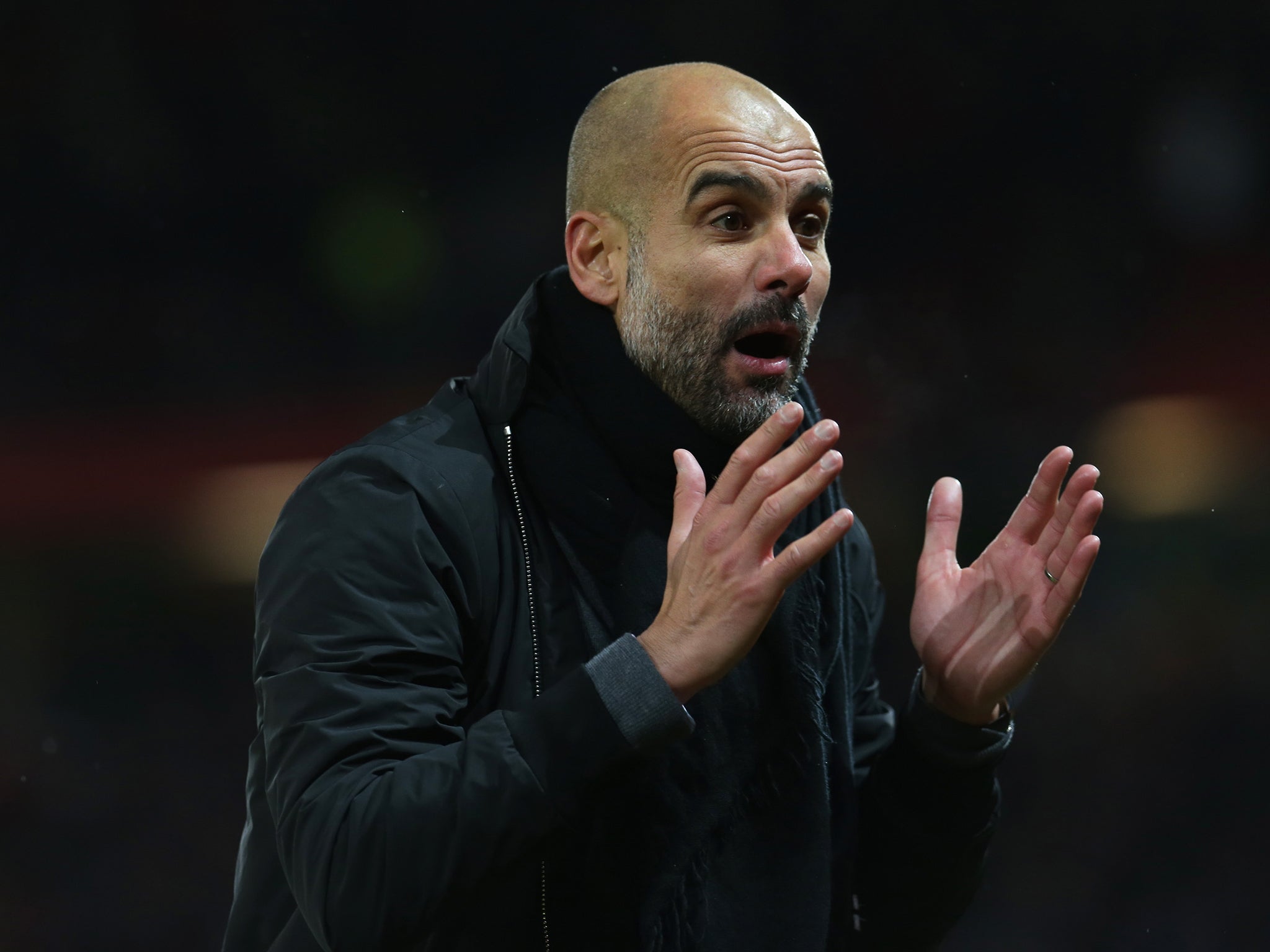What is beautiful football? A definition that has been warped over time
Beautiful football means different things for different people, but the journey to reach today's ideology has helped it differentiate from good football

Your support helps us to tell the story
From reproductive rights to climate change to Big Tech, The Independent is on the ground when the story is developing. Whether it's investigating the financials of Elon Musk's pro-Trump PAC or producing our latest documentary, 'The A Word', which shines a light on the American women fighting for reproductive rights, we know how important it is to parse out the facts from the messaging.
At such a critical moment in US history, we need reporters on the ground. Your donation allows us to keep sending journalists to speak to both sides of the story.
The Independent is trusted by Americans across the entire political spectrum. And unlike many other quality news outlets, we choose not to lock Americans out of our reporting and analysis with paywalls. We believe quality journalism should be available to everyone, paid for by those who can afford it.
Your support makes all the difference.It’s the last minute of the game. Desperate times. And so, with team-mates pouring forward, the centre-half decides to go route one: sticks it in the mixer, plays a huge, raking long ball looking for the big man up top. The striker uses his strength, holds it up, takes a touch, and then smashes the ball into the top corner.
Now, how did you imagine that goal? What was the picture in your mind? Maybe you’re envisioning a lower-league game, maybe under lights, driving rain, mud, that sort of thing. In fact, the goal I’m describing is Dennis Bergkamp for Holland against Argentina at the 1998 World Cup. And the point of this exercise is to demonstrate that when we talk about styles of football, or more specifically the idea of aesthetics in football - the subject of this column - so much of it is tied up in the words we use.
“Beautiful football” is one of those terms that gets strewn around with impunity, despite being spectacularly ill-defined. It has, at various times in football’s history, connoted both immaculate defence and immaculate attack. It has been used to describe mazy wingers, visionary midfielders, towering headers and well-oiled formations. These days, it seems to attach itself to whichever side Pep Guardiola happens to be managing at the time.
But why? What makes beautiful football, exactly? What are its constituent parts? Are we essentially talking about the game’s geometry – objects and ratios, lines and curves, symmetries and spaces and colours? Or is it about how those objects fit together? Or is it something more abstruse – an attitude, a sense of adventure, even an ideology?
Over the years, various minds have wrestled with exactly this concept. In 1952 the British author HE Bates wrote an essay called “Brains In The Feet”, in which he tries to articulate the beauty that distinguishes football from other sports. For Bates, it was some combination of simplicity, colour and theatre: the beauty of touch. “The gladiators march slowly up from their shadowy tunnel into the light of afternoon,” he writes, “and the pores of my skin start dancing, ready to do my thinking for me.”
A generation later, Johan Cruyff’s vision of beautiful football was also essentially one of simplicity, but this time a simplicity of system: efficiency, synchronisation, cause and effect, lever and pulley. Cruyff’s beauty is probably more akin to an engine than a painting. “Sometimes,” he once said, “something’s got to happen before something is going to happen.”
Cruyff was the single biggest influence of Guardiola’s footballing philosophy, one that is generally held as the gold standard of footballing beauty – possession, dominance, attack, technical skill. And clearly, Guardiola’s Manchester City are an excellent side, one with verve, adventure and outstanding individuals. But I would dispute that they are a beautiful side. Guardiola’s Barcelona, the passing triangles, the neat swivels, the softly padding feet of Messi, the Da Vincian parabola of that chip against Arsenal: yes, yes, yes, yes. But City? Too many tap-ins. Too much naked aggression. Too little chill.

For the same reason, the furious high-energy pressing of Jürgen Klopp’s Liverpool and Mauricio Pochettino’s Tottenham has never quite moved me aesthetically. At their heart, both essentially represent chaos: attrition, just a very fast attrition. When two high-pressing sides meet each other, the result can often be unwatchable, a fiesta of high-velocity ricochets and sliding tackles and endless throw-ins that always puts me in the mind of free jazz: there may, on some dizzily distant plane, be a tune in there somewhere, but I’m not hanging around to find out.
On the other side of the ledger, you have a team like Burnley. If you ever get the chance to see them in the flesh, watch the way they move, especially when they are out of possession: those four defenders and five midfielders in perfect choreographed formation, the spaces evenly parcelled, the way these claret-clad figures narrow and widen the spaces like a breathing lung, every man in his place, eleven moving as one.
You may baulk at the idea of Burnley as a beautiful football team. Part of the problem, as I see it, is terminology. Over the years “beautiful football” has become synonymous with “good football”, itself an unsatisfactory conflation of “successful football”, “attacking football” and “stylish football”. None is easy to pin down, particularly in a sport that loves nothing more than an argument. And in this respect the modern game, with its fusion of attacking and defensive functions, its blurring of the lines between proactivity and reactivity, ties us in knots.

Does beautiful football have to “work”, on some level? Let’s ask the two Socrates. One – the Greek philosopher – says that what is beautiful must ultimately have some connection with what is good. The other – the Brazilian footballer – specifically strives to detach beauty from success. “For me,” he said, “beauty comes first, victory is secondary and what really matters is joy.”
Personally, I would lean towards the 1980s version. What is aesthetically pleasing need not necessarily be moral, or even that effective. Into this niche category, I would insert Ian Holloway’s ill-fated Blackpool, who were perhaps the most stylish relegated Premier League team ever, a tangerine whirlwind, one with an irresistible unseen rhythm to them, even when they were getting taken apart. Even their defeats – magnificent 6-0 tonkings and heartbreaking 3-2 nailbiters – had a certain nonchalance to them.

Of course, you may have a totally different take. You may worship at the altar of possession football. You may derive an anarchic pleasure from the humble goalmouth scramble. You may believe the real beauty of football resides simply in the feeling your team gives you, at which point David Hume would probably interject to point out the major impediment to judging beauty, namely the basic human inability to separate empirical fact from sentiment. To which you might well respond in turn: what is beauty, if it doesn’t make you feel?
There are no right or wrong answers here. Maybe that’s the point. Next time you hear someone talking about “beautiful football”, try and pin down what exactly it is they’re getting at. Maybe it’s time to admit that “beautiful football” is just one of those phrases that has been refracted into redundancy; a concept that you and I will visualise in two very different ways; a term with as many interpretations and denotations as beauty itself.
Join our commenting forum
Join thought-provoking conversations, follow other Independent readers and see their replies
Comments